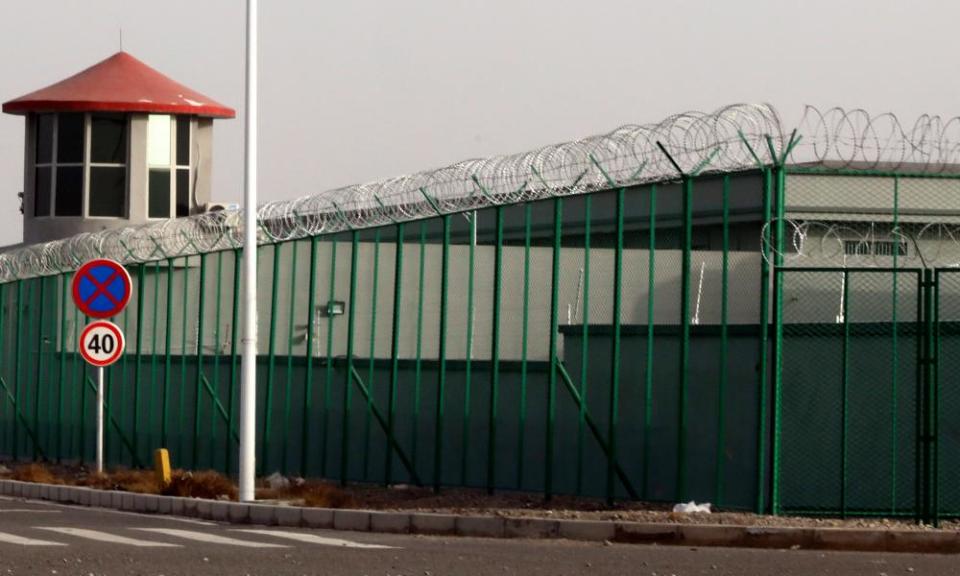China's white paper on forced labour suggests unease at western pressure

China’s new white paper on forced labour in Xinjiang suggests a government uneasy about growing western pressure over abuses of Muslim minorities in the region
It also gives a rare, if oblique, glance into the scale of government attempts to reshape communities in the region, detailing how 10% of the region’s population were relocated over the past year, after being dubbed “surplus rural workers”.
The white paper comes just days after the US said it would block imports of goods, including cotton, clothes and computer parts, from five companies based in Xinjiang, over concerns about forced labour.
The “Withhold Release Orders” come into effect immediately, and Washington is considering far more sweeping region-wide bans on products including cotton and tomatoes.
There is also pressure from the private sector; this week, H&M became the latest western company to say it would cut ties with producers in the region.
The Uighurs are a predominantly Muslim Turkic-speaking ethnic group, primarily from China’s northwestern region of Xinjiang. They have been subject to religious and ethnic persecution by Chinese authorities, with rights groups claiming that in recent years more than 1 million people have been held in detention camps.
Having initially denied the existence of the camps, China has described them as “vocational education centres” in the face of mounting evidence in the form of government documents, satellite imagery and testimonies from escaped detainees. Satellite images have also suggested that more than two dozen Islamic religious sites have been partly or completely demolished since 2016.
In July 2019 China claimed that most of the people sent to the mass detention centres have “returned to society”, but this has been disputed by relatives of those detained. Around 1-1.5m Uighur are estimated to live overseas as a diaspora, many of whom have campaigned against the treatment of their families. China repeated these claims in December 2019, but offering no evidence of their release.
In July 2020, China's UK ambassador denied abuse of Uighurs, despite the emergence of drone footage of hundreds of blindfolded and shackled men.
“My hunch is that the CCP issued the white paper because it fears economic consequences,” said Timothy Grose, a professor of China studies with expertise in ethnic policy at the Rose-Hulman Institute of Technology in Indiana.
“Reports of forced labor have circulated for over a year, so the timing of this white paper is interesting … Quite possibly, the CCP fears other countries will impose similar [import bans].”
Forced labour is part of a broad Chinese government campaign of repression against Muslim minorities in Xinjiang, which has also involved reproductive coercion and more than a million people being forced into a vast network of internment camps.
Related: Uighur Muslim teacher tells of forced sterilisation in Xinjiang
Details of the system have filtered out of the region slowly, with satellite images and survivor accounts helping piece together understanding of what is happening.
Beijing strenuously denies there is any abuse in Xinjiang. It initially rejected reports of a new network of camps, and then later said the centres it had built were vocational and language training centres.
The paper may not shed direct light on the camp system. Although it describes 1.29 million people a year passing through vocational training, the Chinese language name for these centres is different from the one used in official documents to describe the internment and “re-education” camps.
However, it does make clear the scale on which communities are being reshaped in Xinjiang. It claims that 2.6 million so-called “surplus” rural workers – or about 10% of all residents – were “relocated” in the year to June 2020, with 1.8 million moved the year before that.
A recent “surplus labour” policy in some regions of Xinjiang obliges those aged under 30 to travel outside Xinjiang to work and “eliminate old habits”, Grose said, while those aged 30 to 45 relocate within Xinjiang.
Related: The Guardian view on China and the Uighurs: everyone’s business
The white paper provides names of a few individuals it says travelled thousands of kilometres from their homes for work, including in coastal Fujian province, and eastern Jiangxi and Anhui provinces. In most cases it does not say what their new work is.
The white paper also confirms that southern rural areas, a traditional heartland of minority Uighur communities and culture, have been a particular focus of government campaigns.
“Profound changes have taken place in the life, work and mentality of the people of all the ethnic groups in Xinjiang and particularly in southern Xinjiang,” the white paper said.

 Yahoo News
Yahoo News 